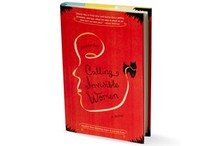New Beach Reads to Blaze Through
Kick back—there's a reason they call them beach reads.

Photo: Ben Goldstein/Studio D
24 of 27
Calling Invisible Women
By Jeanne Ray
256 pages;
Crown
When Clover Hobart, 50-something wife and mother of two, notices after her morning shower that she can't see her reflection in the bathroom mirror, she assumes she's had a stroke. But when neither her husband nor her grown son notices anything out of the ordinary, Clover realizes she's become exactly what she often feels: overlooked. Jeanne Ray's newest novel, Calling Invisible Women, tells the humorous, touching story of how Clover reclaims her sense of self. Over the years, her once-thriving journalism career has shrunk to a weekly gardening column, and she's filled her days walking the dog, getting dinner on the table, and being a pediatrician's dutiful wife. But after she "disappears," she finds a support group of women all suffering from the same baffling disorder. Emboldened by this sisterhood and the freedom her condition gives her, Clover sees "a whole world of beauty and injustice I had never dared to notice before." Stripping off her clothes to go undetected, she becomes a sort of superhero: punishing bullies on the school bus, halting bank robberies, preventing her son from getting a tattoo—not to mention reigniting her career as an investigative journalist. Invisibility is hardly a subtle metaphor. But Ray argues persuasively that going undercover has its benefits.
— Abbe Wright
Published 06/25/2012


